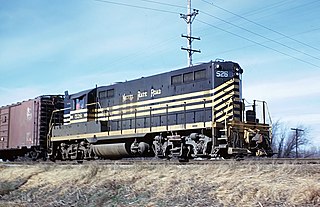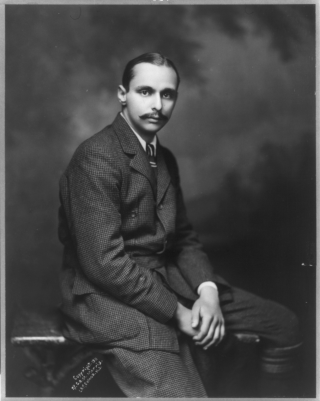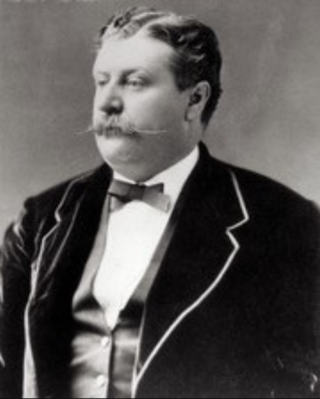Related Research Articles

William Magear "Boss" Tweed was an American politician most notable for being the political boss of Tammany Hall, the Democratic Party's political machine that played a major role in the politics of 19th-century New York City and State.

Stephen Jay Gould was an American paleontologist, evolutionary biologist, and historian of science. He was one of the most influential and widely read authors of popular science of his generation. Gould spent most of his career teaching at Harvard University and working at the American Museum of Natural History in New York. In 1996, Gould was hired as the Vincent Astor Visiting Research Professor of Biology at New York University, after which he divided his time teaching between there and Harvard.

Wall Street is a street in the Financial District of Lower Manhattan in New York City. Eight city blocks long, it runs between Broadway in the west and South Street and the East River in the east. The term "Wall Street" has become a metonym for the financial markets of the United States as a whole, the American financial services industry, New York–based financial interests, or the Financial District itself. Anchored by Wall Street, New York has been described as the world's principal fintech and financial center.

Berwick-upon-Tweed, sometimes known as Berwick-on-Tweed or simply Berwick, is a town and civil parish in Northumberland, England, 2+1⁄2 mi (4 km) south of the Anglo-Scottish border, and the northernmost town in England. The 2011 United Kingdom census recorded Berwick's population as 12,043.

Jason Gould was an American railroad magnate and financial speculator who founded the Gould business dynasty. He is generally identified as one of the robber barons of the Gilded Age. His sharp and often unscrupulous business practices made him one of the wealthiest men of the late nineteenth century. Gould was an unpopular figure during his life and remains controversial.

The Black Friday is the term for a gold panic on September 24, 1869, which triggered a financial crisis in the United States. It was the result of a conspiracy between two investors, Jay Gould, later joined by his partner James Fisk, and Abel Corbin, a small time speculator who had married Virginia (Jennie) Grant, the younger sister of President Ulysses S. Grant. They formed the Gold Ring to corner the gold market and force up the price of the metal on the New York Gold Exchange. The scandal took place during the Grant Presidency. The Secretary of the Treasury, George S. Boutwell, had a policy to sell Treasury gold at biweekly intervals for a sinking fund to pay off the national debt. Along with other, non-routine gold sales, this acted to stabilize the dollar and boost the economy. The country had gone through tremendous upheaval during the Civil War and was not yet fully restored.

The New York, Chicago and St. Louis Railroad, abbreviated NYC&St.L, was a railroad that operated in the mid-central United States. Commonly referred to as the "Nickel Plate Road", the railroad served parts of the states of New York, Pennsylvania, Ohio, Indiana, Illinois, and Missouri. Its primary connections occurred in Buffalo, Chicago, Cincinnati, Cleveland, Indianapolis, St. Louis, and Toledo.

George Jay Gould I was a financier and the son of Jay Gould. He was himself a railroad executive, leading the Denver and Rio Grande Western Railroad (DRGW), Western Pacific Railroad (WP), and the Manhattan Railway Company.

Jay Gould II was an American real tennis player and a grandson of the railroad magnate Jay Gould. He was the world champion (1914–1916) and the Olympic gold medalist. He held the U.S. Amateur Championship title continuously from 1906 to 1925, winning 18 times. During the same period, he never lost a set to an American amateur, and lost only one singles match, to English champion E.M. Baerlein. The court built for him by his father at the family's Georgian Court estate was restored in 2005. Jay Gould II is the great-great-uncle of US Olympic cyclist Georgia Gould, who qualified to race in the London 2012 Olympiad.

James Fisk Jr., known variously as "Big Jim", "Diamond Jim", and "Jubilee Jim" – was an American stockbroker and corporate executive who has been referred to as one of the "robber barons" of the Gilded Age. Though Fisk was admired by the working class of New York and the Erie Railroad, he achieved much ill-fame for his role in Black Friday in 1869, where he and his partner Jay Gould befriended the unsuspecting President Ulysses S. Grant in an attempt to use the President's good name in a scheme to corner the gold market in New York City. On January 7, 1872, Fisk was assassinated in New York City, in relation to his business dealings.

Gloria Gould was an American socialite who was the daughter of industrialist heir George Jay Gould I.

Howard Gould was an American financier and the son of Jay Gould.

The Tweed Courthouse is a historic courthouse building at 52 Chambers Street in the Civic Center of Manhattan in New York City. It was built in the Italianate style with Romanesque Revival interiors. William M. "Boss" Tweed – the corrupt leader of Tammany Hall, a political machine that controlled the New York state and city governments when the courthouse was built – oversaw the building's erection. The Tweed Courthouse served as a judicial building for New York County, a county of New York state coextensive with the New York City borough of Manhattan. It is the second-oldest city government building in the borough, after City Hall.

Chambers Street is a two-way street in the New York City borough of Manhattan. It runs from River Terrace, Battery Park City in the west, past PS 234, The Borough of Manhattan Community College, and Stuyvesant High School, to the Manhattan Municipal Building at 1 Centre Street in the east. Between Broadway and Centre Street, Chambers Street forms the northern boundary of the grounds surrounding New York City Hall and the Tweed Courthouse. Opposite the Tweed Courthouse sits the Surrogate's Courthouse for Manhattan. 280 Broadway the Marble Palace, lies west of there, on the north side of Chambers.

LeGrand Lockwood, was a businessman and financier in New York City in the late 19th century. He built the Lockwood–Mathews Mansion in Norwalk, Connecticut.

William Henry ("Judge") Moore was an American attorney and financier. He organized and promoted or sat as a director for several steel companies that were merged with among others the Carnegie Steel Company to create United States Steel. He and his brother James Hobart Moore helped create the Diamond Match Company, National Biscuit Company, First National Bank, the Delaware, Lackawanna and Western Railroad, the American Can Company, the Lehigh Valley Railroad, the Chicago, Rock Island and Pacific Railroad, the Continental Fire Insurance Company, the Western Union Telegraph Company, the American Cotton Oil Company, and Bankers Trust. Moore was an avid and expert horseman.

Ulysses S. Grant and his administration, including his cabinet, suffered many scandals, leading to a continuous reshuffling of officials. Grant, ever trusting of his chosen associates, had strong bonds of loyalty to those he considered friends. Grant was influenced by political forces of both reform and corruption. The standards in many of his appointments were low, and charges of corruption were widespread At times, however, Grant appointed various cabinet members who helped clean up the executive corruption. Starting with the Black Friday (1869) gold speculation ring, corruption would be discovered in seven federal departments. The Liberal Republicans, a political reform faction that bolted from the Republican Party in 1871, attempted to defeat Grant for a second term in office, but the effort failed. Taking over the House in 1875, the Democratic Party had more success in investigating, rooting out, and exposing corruption in the Grant Administration. Nepotism, although legally unrestricted at the time, was prevalent, with over 40 family members benefiting from government appointments and employment. In 1872, Senator Charles Sumner, labeled corruption in the Grant administration "Grantism."
The Gould family is a wealthy American family that came to prominence in the late 19th century. The family's fortune was primarily earned through a railroad empire built by Jason "Jay" Gould, a notorious "robber baron" during the Gilded Age. At its height, this network comprised the Denver & Rio Grande, Missouri Pacific, Wheeling & Lake Erie, Wabash, Texas Pacific, Western Maryland and International-Great Northern railroads among others.
References
- ↑ Trumbore, Brian. "Jay Gould". Archived from the original on 2017-05-22. Retrieved 2008-12-17.
- ↑ Donohue, William F. "An Historical Overview of the Federal Bank Crime Laws" (PDF). Carlson, Calladine & Peterson LLP. Archived from the original (PDF) on 2011-07-08. Retrieved 2008-12-17., p. 8
- ↑ "The Tenth National Bank; Jay Gould secures a referee" (PDF). The New York Times. February 4, 1880. Retrieved 2008-12-17.